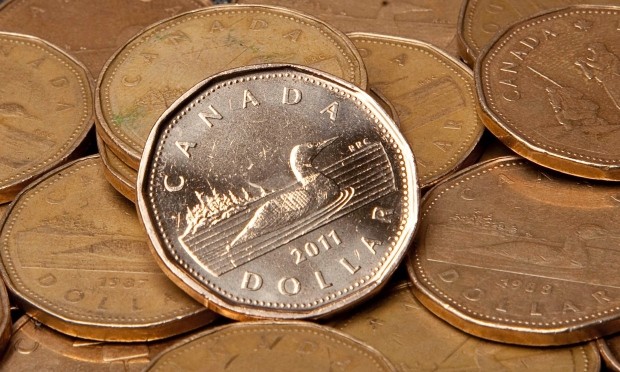Loonie gains against greenback as oil rises
Post on: 21 Апрель, 2015 No Comment

Text:
Published Tuesday, January 11, 2011 11:55AM EST
TORONTO — The Canadian dollar moved higher against the American currency Tuesday amid rising commodity prices while anxiety about Europe’s sovereign debt issue moderated.
The loonie was up 0.36 of a cent to 101.04 cents US.
Sentiment was also improved by a pledge from Japan to support Europe’s bailout efforts.
Japan pledged Tuesday to fund about a fifth of the European bailout fund’s next bond issue, which is estimated at about five billion euros (US$6.5 billion). The cash will be used to finance Ireland’s rescue but helped ease tensions across markets on Tuesday.
Analysts say Japan and China, which both have large cash reserves, are likely interested by the higher yields in Europe as well as stabilizing world markets among key trade partners. China, which is criticized internationally for keeping its own currency low to gain trade advantage, may even be trying to garner political good will.
Markets have been rattled by concerns that debt-laden Portugal might have to seek a bailout from other nations in Europe and the International Monetary Fund.
The loonie benefited from higher commodity prices as the February crude contract on the New York Mercantile Exchange ahead 75 cents to US$90 a barrel.
Oil has risen sharply over the last two days after the 1,300-kilometre trans-Alaska pipeline, which normally carries between 620,000 barrels a day, was shut Saturday after a leak was discovered at a North Slope pump station. Oil production on the North Slope was cut by 95 per cent.
The March copper contract on the Nymex climbed seven cents to US$4.33 a pound while the February bullion contract in New York rose $2.60 to US$1,376.70 an ounce.
Traders also took in data showing slowing activity in the Canadian housing sector.
Canada Mortgage and Housing Corp. reported that the seasonally adjusted annual rate of housing starts was 171,500 units in December, down from 198,200 units in November.
CMHC said the drop was due to the multiple starts segment, especially in Ontario.
The Australian dollar — viewed, like the loonie, as a commodity currency — was the worst performing primary currency on Tuesday, losing about 1.2 per cent against the U.S. dollar.
The currency has reached a new one-month low. on the back of the negative economic impact of ongoing flooding, said Camilla Sutton, Chief Currency Strategist Currency Strategist at Scotia Capital.
Flood waters have reached Brisbane and rains are ongoing. For (foreign exchange) markets this has a negative impact for Australian’s growth outlook, but it also dampens the outlook for interest rate hikes (by the country’s central bank).














